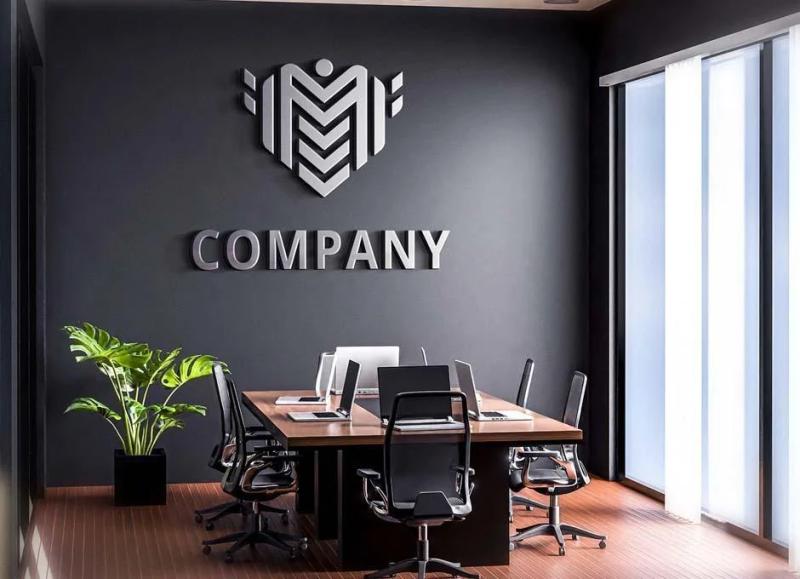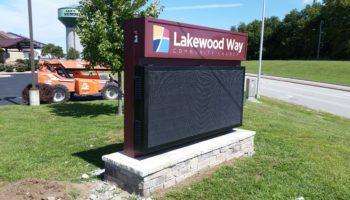Choosing the Right Materials for Your Custom Interior Signs: A Comprehensive Guide

Creating the right interior signage for your business goes beyond design—it’s also about choosing the right materials. The materials you select can influence not only the look and feel of your space but also durability, cost, and overall impact. In this guide, we’ll break down some of the best materials for custom interior signs, with insights on what makes each ideal for various settings and styles.
1. Acrylic: Versatile and Modern
Acrylic is one of the most popular materials for custom interior signs due to its clean, modern appearance and versatility. Acrylic can be made in a variety of colors, finishes, and thicknesses, giving it a polished, glass-like look without the fragility of glass.
- Best For: Office lobbies, retail spaces, restaurants, and healthcare facilities
- Pros: Lightweight, shatter-resistant, and highly customizable with color and shape
- Cons: Can scratch over time; higher-end acrylic can be pricier
2. Wood: Warm and Natural
For a timeless look, wood is a perfect choice. Wooden signs can be crafted from various types of wood, each offering unique grains and finishes. Whether painted, stained, or left natural, wood adds a warmth and organic quality to any interior.
- Best For: Boutique stores, cafes, corporate offices, or rustic and eco-friendly brands
- Pros: Durable, sustainable, and offers a wide range of aesthetic possibilities
- Cons: Can be more expensive; wood may warp or crack in overly humid environments
3. Metal: Sleek and Professional
Metal signs lend a sleek, industrial look to interiors, making them ideal for businesses that want to convey strength and professionalism. Metals like aluminum, stainless steel, and brass are commonly used, each providing different textures and finishes.
- Best For: Corporate offices, modern retail spaces, tech companies, and law firms
- Pros: Highly durable, resistant to wear and tear, and offers a premium look
- Cons: Often more expensive and heavier, requiring professional installation
4. Foam Core: Lightweight and Cost-Effective
Foam core signs are perfect for businesses seeking an affordable and lightweight option. These signs are made by sandwiching foam between two paper or plastic surfaces, making them easy to mount and change out frequently.
- Best For: Temporary signage, events, trade shows, or startups on a budget
- Pros: Lightweight, easy to install, and very budget-friendly
- Cons: Not as durable or permanent; best for short-term or temporary use
5. PVC: Durable and Cost-Efficient
PVC, or polyvinyl chloride, is a durable plastic that’s a popular choice for indoor signs due to its affordability and versatility. It can be easily cut into various shapes and painted or printed for a custom look.
- Best For: Indoor office signs, directional signs, and retail spaces
- Pros: Water-resistant, affordable, and easy to work with for custom shapes
- Cons: Limited color options unless printed; lower-end PVC can look less refined
6. Glass: Elegant and Sophisticated
For a high-end look, glass signs are an excellent choice. They provide a refined, elegant look, especially when used in high-end retail stores, luxury hotels, or executive offices.
- Best For: Luxury stores, law firms, financial institutions, and high-end office spaces
- Pros: Professional and elegant appearance, works well with etching and frosting for unique designs
- Cons: Fragile, heavy, and typically more expensive; may require frequent cleaning for a pristine look
7. Fabric: Soft and Artistic
Fabric signs are unique and eye-catching, often used for wall art, hanging signs, or large-scale branding installations. Fabric can be printed with high-resolution images, making it a good choice for businesses looking for a softer, artistic touch.
- Best For: Art galleries, creative offices, cafes, and indoor banners
- Pros: Lightweight, versatile, and able to capture vibrant colors and images
- Cons: Requires regular cleaning; may fade over time in direct sunlight
8. Vinyl: Cost-Effective and Versatile
Vinyl is widely used in custom interior signs for its versatility and affordability. Vinyl can be cut to any shape, colored, or printed with images and graphics, making it ideal for brand logos or decorative text.
- Best For: Window decals, wall graphics, and directional signs
- Pros: Easy to install and replace; highly versatile and cost-effective
- Cons: Not ideal for permanent installations; can lose adhesion over time
Final Thoughts: Matching Materials to Brand and Function
The material you choose for your custom interior signs will reflect both your brand and the message you want to convey. When deciding, consider the following questions:
- What impression do you want to leave? Sleek metal and glass convey professionalism, while wood and fabric bring warmth and creativity.
- How long do you need the sign to last? For permanent signs, durable materials like metal, wood, or acrylic are excellent choices. For short-term needs, foam core or vinyl may be a better fit.
- Where will the sign be located? Ensure the material aligns with the setting and traffic of the space.
Choosing the right materials can make all the difference in creating interior signs that not only look fantastic but also effectively support your brand identity and enhance your interior space

Comments